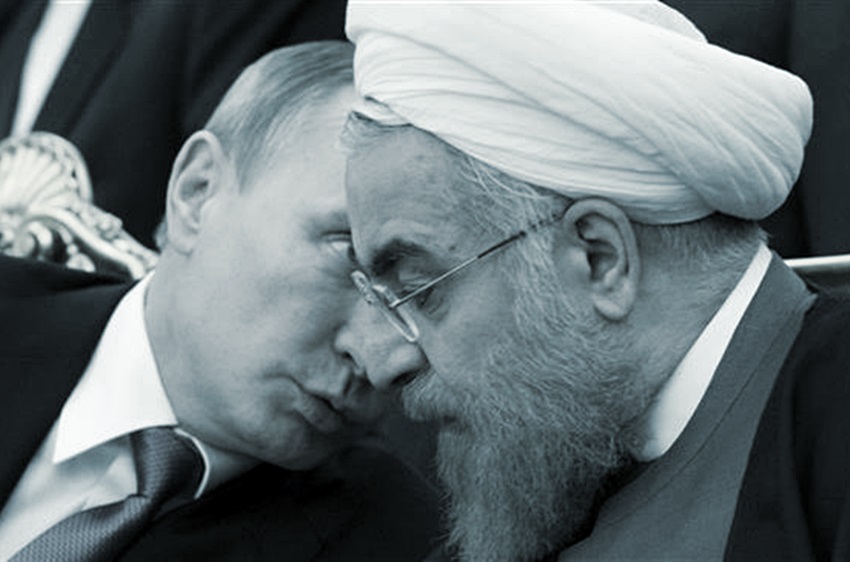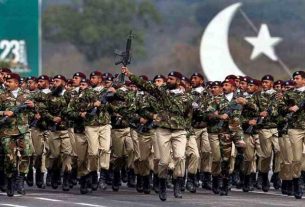Sat 01 June 2019
Unable to sustain its Syrian campaign, Iran is rapidly losing ground to Russia.
The Syrian regime is suffering from the worst economic crisis since the outbreak of the Syrian revolution in 2011. The acute shortages of fuel, gas and electricity have frustrated even the staunchest loyalists who now publicly express their dissatisfaction against Bashar al-Assad’s leadership. Ironically, this comes as the regime and its backers are claiming “victory” against the rebels in an attempt to improve al-Assad’s standing in the regional and international arena and convince the international community to start funding the reconstruction of the war-ravaged country. A number of internal factors have contributed to the growing crisis, but recently, Washington’s “maximum pressure” campaign against Tehran has had a significant impact as well by decreasing Iranian financial and energy flows to Damascus. This has also weakened Iranian influence over the regime and allowed Russia to make significant gains at its expense.
Propping Assad
From 2013 to 2016, Assad managed to keep running the areas under his control mainly thanks to the financial, economic and military support he had been getting from Iran and Russia. As his regime expanded the territory under its control over the past two years, it faced increasing challenges in providing basic goods and services to the general population and as a result, has become even more dependent on its foreign backers. Since the outbreak of the Syrian revolution in March 2011, Iran has spent around $15bn annually to keep al-Assad in power. Subsidising the Syrian energy sector was one of the main pillars of its economic support. Prior to the 2011 uprising, Syria produced 385,000 barrels of oil per day (bpd), most of it coming from the eastern part of the country, and around 8.4 billion cubic metres of natural gas per year, most of which was used to generate electricity.
Currently, some estimates put oil consumption in areas controlled by the regime at around 136,000 bpd and production at 24,000 bpd, which means cash-strapped Damascus has to import around 80 percent of its energy needs from abroad worth more than $2.3bn a year. In order to help the Syrian regime meet its energy demands, Iran had been shipping an estimated one to three million barrels a month to Syria. Russia too has spent a sizeable amount of money since September 2015 when it launched its military intervention in Syria. Russian spending has focused mostly on the war effort, which has cost an estimated $4m a day – or upwards of $5.3bn for the past three and a half years. How much in additional funds allocated to the Syrian regime in different forms is unclear. Russian oil shipments to Damascus, however, until recently appeared to have been paid for by Iran.
Lacking the financial means to pay his patrons back, al-Assad has handed Moscow and Tehran the country’s strategic infrastructure and resources, such as ports, airports, oil fields, phosphate mines and more. This has further fuelled the already fierce competition between Russia and Iran; both see securing more resources and economic opportunities not only as a form of compensation for keeping al-Assad in power but also as a way to have more control over al-Assad and his regime and retain their strategic presence in Syria.
In this context, the newly-introduced “maximum pressure” policy by the United States is giving Russia an advantage vis-a-vis Iran. Since imposing oil sanctions on Iran last November, the US managed to cut Tehran’s oil exports from 2.8 million to around 500,000 bpd. According to Brian Hook, the US special representative for Iran, as a result of the first round of sanctions, the Iranian government has lost more than $10bn in oil revenues. This, in turn, has limited significantly the amount of funds Tehran can expend to sustain its positions in Syria.
At the same time, the US sanctions have almost halted Iranian oil supplies to the Assad regime. Over the past six months, it has received only one confirmed oil shipment from Iran. The acute shortage of fuel, gas, and electricity, in addition to the worsening economic situation, have led to growing anger among people living in regime-controlled areas and triggered an unprecedented torrent of complaints on social media by al-Assad loyalists who once rallied behind his regime.
Weakened Iran, resurgent Russia
With Iran being unable to send oil and money as it used to do, the Syrian regime is left with two options: either to wage war on areas controlled by US-backed Kurdish militias to recover the oil wells in the eastern part of the country, or to ask Russia for help. While the first is almost impossible to do at the moment given the continuous US presence in northeastern Syria, the second is very much possible but may come at a great political cost. Despite being in a good position to compensate for the lack of oil supplies from Iran, Russia doesn’t seem to be in a rush to ease the economic crisis. Perhaps the reason for Moscow’s inaction is its desire to see the regime suffer some more before it interferes and comes to al-Assad’s rescue with a lengthy list of demands he would not be able to reject.
Meanwhile, the US’s “maximum pressure” policy is helping Moscow also undermine the influence of Iran and its Shia militias and strengthen its positions on the ground. Recent reports indicate that the deteriorating economic situation in Iran has negatively affected Iranian allies and proxies in the region, including Hezbollah. Russia had been trying to limit the influence of the Shia groups without having a direct confrontation with them for some time. Over the past six months, there have been repeated clashes between pro-Russia and pro-Iran Syrian forces, mainly between the Fifth Corps and the “Tiger forces” led by Suhail al-Hassan, on one side, and the National Defence militia and the Fourth Division led by al-Assad’s brother, Maher, on the other.
More recently, this confrontation has intensified. In April, there were multiple clashes in Aleppo and Deir Az Zor between Russian forces, Russian military police, and the Quds Brigade on one side, and the National Defence militia, the Fourth Division, and Baqir Brigade on the other. Earlier this month, Moscow managed to expel Shia militias from the areas around Damascus and Aleppo international airports, establishing full control over these strategic transportation hubs. Furthermore, the designation of the Iranian Revolutionary Guard Corps (IRGC) as a foreign terrorist organisation has turned the para-military force into a legitimate target in Syria. In the past, Moscow was turning a blind eye to Israel’s systematic targeting of IRGC, its militias, and bases because it was helping it undermining Iran’s influence on the Assad regime and its security institutions. Now it will have more incentives to do so.
That Russia has been quite successful in sidelining Iranian-backed militias was also evident in the recent assault on Idlib. Military operations there have been led by Russian forces and Russian-backed Syrian regime divisions, with no significant Iranian or pro-Iran militia involvement. By sidelining Iran in Syria, Russia is able to corner al-Assad and position itself as the only “savior” of his regime. The Syrian dictator is seemingly no longer able to play Moscow against Tehran to retain political leverage. What this will mean for the future of Syria remains to be seen. It could decrease Iran’s sectarian influence and diminish the sectarian aspect of the conflict. It could also affect the chances for peace.
An optimistic scenario would be that Russia would use its strengthened position to force Assad to accept a political settlement through the Astana process. A more realistic one, however, is Russia pushing forward with its onslaught on northern Syria to wipe out the opposition and consolidate further its control over Syria and transforming it into its puppet state.

Dr Ali Bakeer is an Ankara-based political analyst and researcher.
The statements, views and opinions expressed in this column are solely those of the author and do not necessarily represent those of Media Revive Network.





